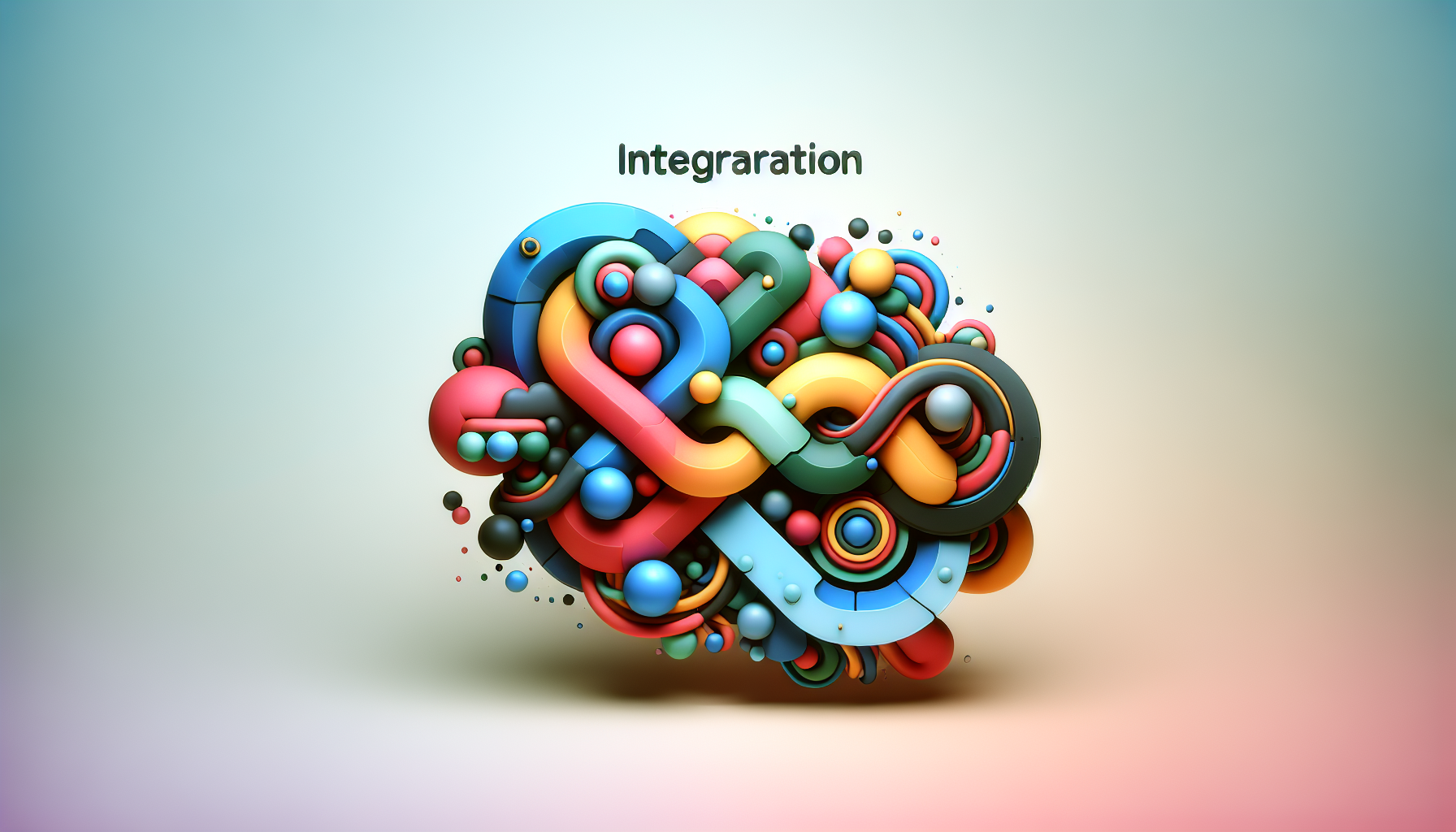Integrate is a term widely used across various contexts, from technology to business, healthcare, and social sciences. Its essence revolves around the concept of combining distinct components into a cohesive whole. In this article, we will explore the multifaceted nature of integration, its significance, and practical applications in different sectors.
1. Definition of Integration
Integration refers to the process of combining parts into a unified system. This can involve merging different software systems, aligning business strategies, or fostering collaboration among teams. The goal of integration is to enhance efficiency, improve communication, and optimize resource utilization.
2. Types of Integration
-
Technical Integration: This pertains to the merging of various technological systems. It includes APIs (Application Programming Interfaces) that allow different software applications to communicate effectively. For instance, integrating a customer relationship management (CRM) system with an enterprise resource planning (ERP) system can streamline data transfer and enhance operational efficiency.
-
Business Integration: In a business context, integration involves aligning various departments and functions to work towards common objectives. This can include fusion through mergers and acquisitions or enhancing collaboration through shared goals and strategies.
-
Social Integration: Social integration concerns the incorporation of individuals from diverse backgrounds into a cohesive community. It prioritizes inclusivity and cooperation, often within societal, cultural, or organizational settings.
3. Importance of Integration
-
Enhanced Efficiency: Integrating systems or processes eliminates redundancy, reduces manual work, and minimizes errors, leading to increased efficiency.
-
Improved Data Quality: By integrating data sources, organizations can ensure consistency and reliability, which is essential for accurate analysis and decision-making.
-
Seamless User Experience: In the tech world, integration enables users to enjoy a seamless experience across different platforms and devices. Consumers appreciate consistency, whether they’re shopping online or accessing services through a mobile app.
-
Better Decision-Making: Integration ensures that decision-makers have access to unified, real-time data. This comprehensive view allows for informed responses to market changes and influences strategic planning.
4. Integration in Technology
4.1. Systems Integration
Systems integration is crucial in today’s digital landscape. It involves connecting different IT systems and software applications to perform as a coordinated whole. Benefits include:
-
Automation of Workflows: Automated workflows, facilitated through integration, allow organizations to streamline processes and reduce manual intervention.
-
Real-Time Data Access: Integrated systems can provide real-time access to business metrics, enabling quick response to challenges and opportunities.
4.2. Cloud Integration
With the rise of cloud computing, cloud integration has become vital. This refers to the tools, processes, and methodologies that connect cloud-based services and applications. Key points include:
-
Scalability: Cloud integration solutions can easily be scaled to meet the growing demands of a business.
-
Cost-Effectiveness: By utilizing cloud services, businesses can save on infrastructure costs while maintaining access to advanced functionalities.
5. Integration in Business Strategy
Successful businesses recognize the value of integration at all levels. Strategic integration can take many forms:
-
Vertical Integration: This involves consolidating various stages of production or supply chain. For example, a manufacturer acquiring its supplier to control production costs and ensure quality.
-
Horizontal Integration: This approach includes merging with or acquiring a competitor to expand market reach and eliminate competition.
-
Functional Integration: Aligning different departments such as sales, marketing, and customer service can enhance customer satisfaction and lead to greater overall success.
6. Challenges of Integration
Despite its benefits, integration can pose significant challenges:
-
Compatibility Issues: Different systems may not be compatible, leading to additional costs in modifying or replacing legacy systems.
-
Resistance to Change: Employees accustomed to specific systems may resist the changes that integration entails, impacting morale and productivity.
-
Cost Concerns: The initial investment required for integration projects can be substantial, particularly for small to medium-sized enterprises.
7. Best Practices for Successful Integration
To ensure successful integration, tailored strategies are essential:
-
Comprehensive Planning: Before embarking on integration, thorough planning and assessment of needs will facilitate a smooth transition.
-
Stakeholder Engagement: Involving stakeholders from various departments early in the process can ensure buy-in and reduce resistance.
-
Iterative Approach: Implementing integration in phases allows for adjustments to be made based on feedback and results, minimizing disruption.
8. Future of Integration
The future of integration will likely be driven by advancements in technology. Emerging trends include:
-
Artificial Intelligence and Machine Learning: These technologies are expected to play a key role in automating the integration process and improving data analytics capabilities.
-
Internet of Things (IoT): As more devices become connected, IoT integration will increasingly become essential for businesses to leverage real-time insights and improve operational efficiency.
-
Low-Code / No-Code Platforms: These platforms allow non-technical users to create integration workflows easily, democratizing the process and encouraging broader participation in digital transformation.
9. Case Studies
Examining real-world examples can illuminate the practical implications of integration:
-
Salesforce: As a leader in CRM solutions, Salesforce exemplifies business integration by offering various cloud applications that work together seamlessly, allowing sales and marketing teams to operate efficiently.
-
Zappos: This online retailer has mastered customer service through functional integration, aligning its sales and customer service departments to prioritize customer satisfaction, which has led to a loyal customer base.
10. Conclusion of Integration’s Impact
Integration is an integral aspect of both technological advancement and strategic business management. Understanding its types, importance, application, and challenges enables organizations to enhance operational efficiency, improve decision-making, and foster a culture of collaboration. In an ever-evolving digital landscape, successful integration has become a competitive edge, helping entities to adapt and thrive. The confluence of emerging technologies is poised to redefine integration, creating endless possibilities for innovation in various sectors.


